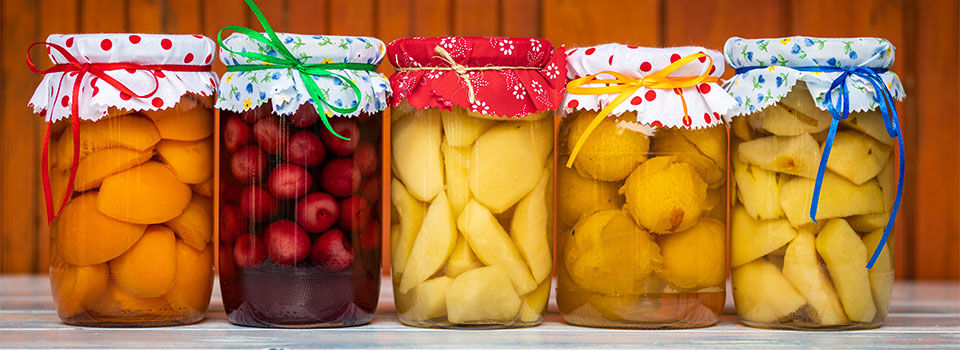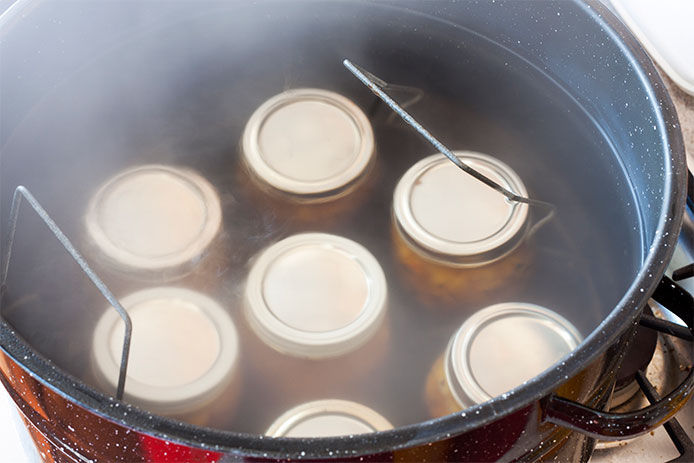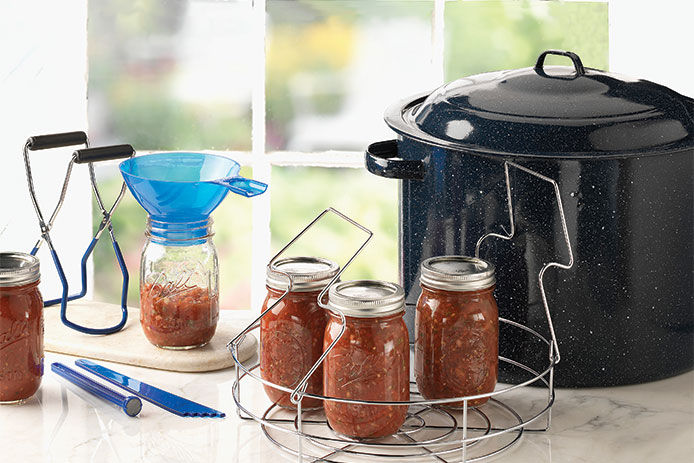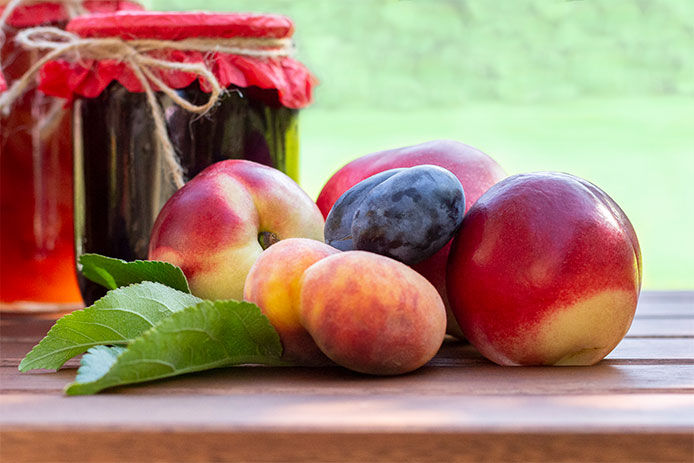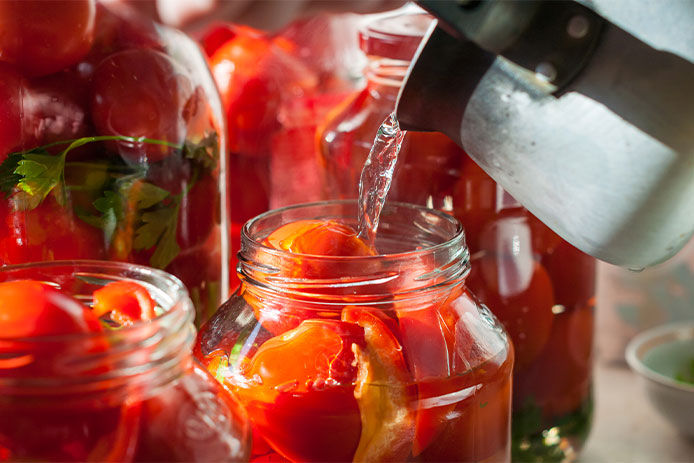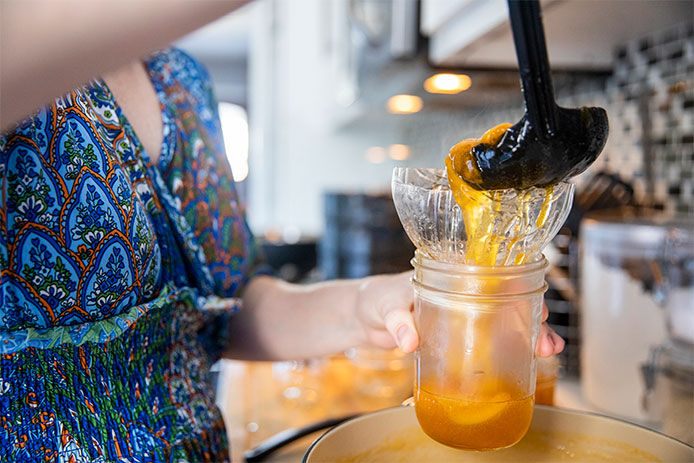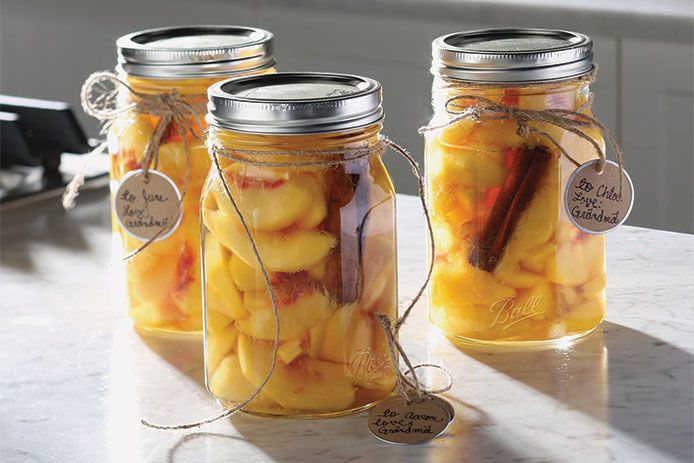There are generally two ways to can fruits — cold pack and hot pack.
Cold packing uses uncooked fruits and requires less time and effort. Place prepared fruits in sanitized jars and cover with hot water, syrup, or juice.
Keep an eye on your jars to confirm that they're upright, so that your fruit doesn't touch the lids. Check your recipe to see how long the jars need to process. Canning recipes usually call for around 10 minutes of full boil.
